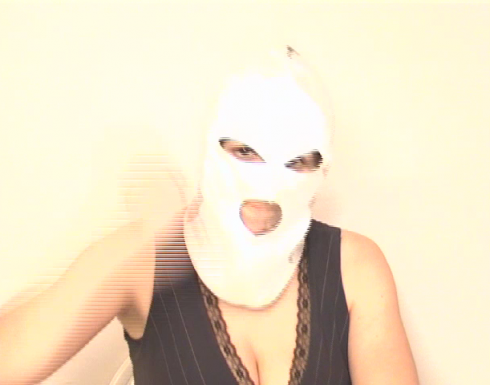
Intellectual Terrorism
- 2005
Who owns public space? We should be able to say “to people, as a whole”. Personally, I would answer that it is anyway inhabited by media. They are the one which distribute and frame the modes of visibility and legitimize the so-called “public interest”. But, media have become promotional relays, and the artist’s word in public space is not referential. In marketing language, an artist isn’t a purchasing adviser, he doesn’t make promotion.
...Besides his image, the artist can propose sense, sensible, symbolic. But this field has been occupied by publicists and advertisers to a lucrative end. Art leads to thought by the symbolic and sensitive force. Visual communication inhibits a critical thinking. One definition of violence may be the manipulation in sort of bringing an opinion to be shared with no open interpretation. By substituting one of the possible parts of art, the emotion creative break the complementarity between the critical and the sensible.
The question is how to reintegrate this space in sort of playing the political part of the artist? For my concern, I’ll choose the subversion of the information flux by making them wary: that is to say by subverting the symbolic perverted. This by reporting the treatment of the information perception and its impact on society ; by questioning the moral, sensible and political consciences opposite to the notions of responsibility and guiltiness ; by trying to understand the mechanisms of action and reaction through their presence or absence ; by highlighting through subversion the lacks : lack of information, lack of analyses, lack of critique, and telltale blanks as slip up.
To carry this out I choose TV news subversion by using montage, substitution and off-setting to disrupt a blind trust and unlegitimize the homogenization in the favor of a critical thinking. To confront consciousness to information or lack of information through manifestations in public space, as performance, tracts and flyers handing out, or video screening on mobile support like scalpers.
What I want is getting people accessing more autonomy and less automatism.
What I want is bringing people to ask themselves what make them act or not.
What I want is that each one takes the responsibility to face the world we’re living in.
Art cannot change the world.
It is the experiences it produces on its public which lead to the ideas development and exchanges.
It is not me nor my image nor even my function as an artist which can influence, but my ideas carried out through the symbolic experience.
- Video. 11 min.
